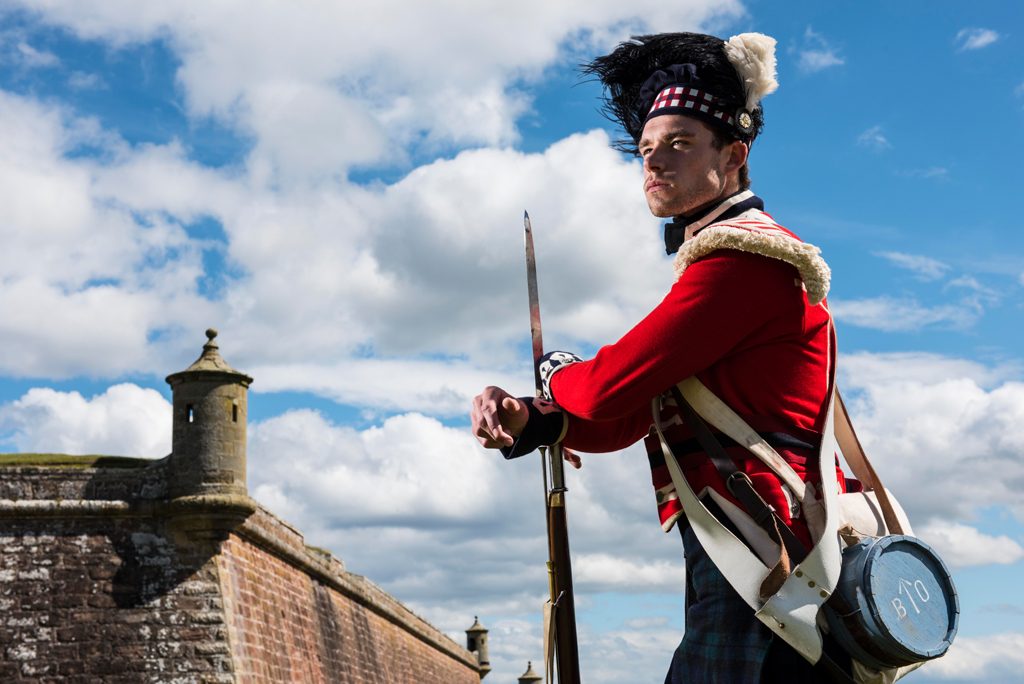1. Hello, we’re the Romans
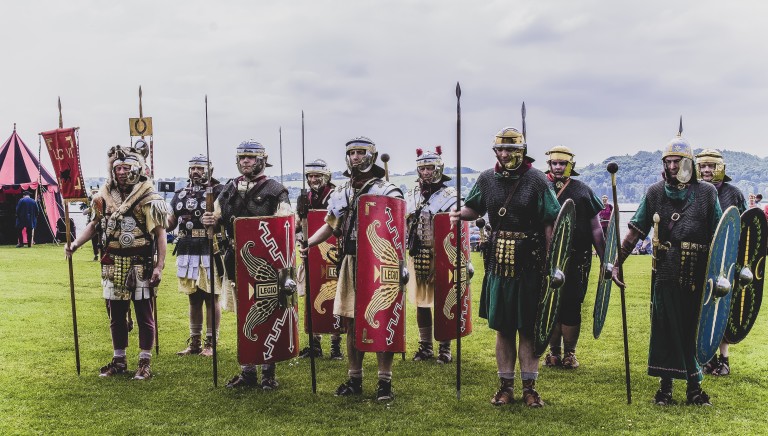
The Romans are renowned for their military might. Their standard weapon was the gladius, or short sword – highly effective for fighting up close.
The Romans also used javelins (throwing spears) for long distance battle. Javelins would pierce the shields of enemies. They were designed to break on impact, which meant they couldn’t be thrown back.
2. Vicious Vikings

The Vikings used similar weaponry – spears, shields and swords – in a similar way.
Viking-era swords were longer than the Roman gladius, generally forged from several rods of iron, to overcome the lack of good-quality iron. This process produced a blade with a distinctive herring-bone pattern.
As technology improved, a single piece of iron could be used, with steel cutting edges welded on to produce an effective slashing weapon.
3. Medieval Military History
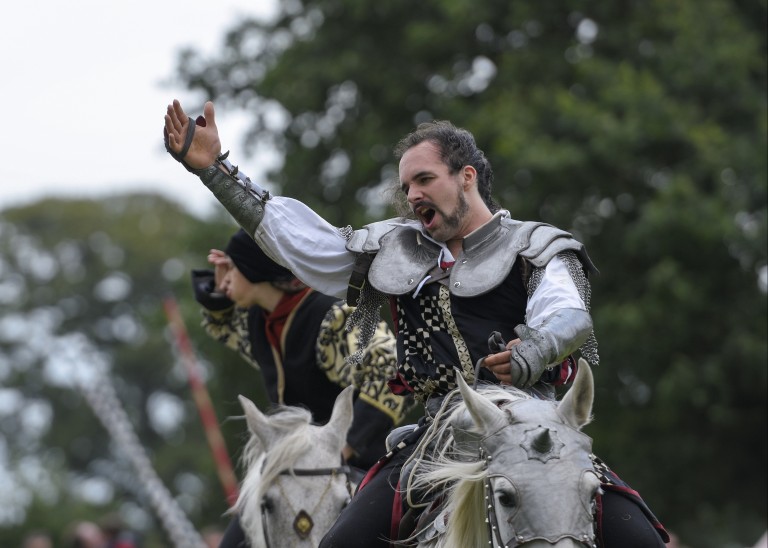
A major innovation in medieval warfare was the development of plate armour. Technological improvements allowed the production of stronger steel. This in turn sparked changes in sword design. Increasingly made purely of steel, swords became thinner and more tapered, with a sharp thrusting point.
This period also saw an expansion of ‘war engines’. These catapults and other throwing devices, such as the mighty trebuchet, used a counterweight to hurl heavy stones with enormous force.
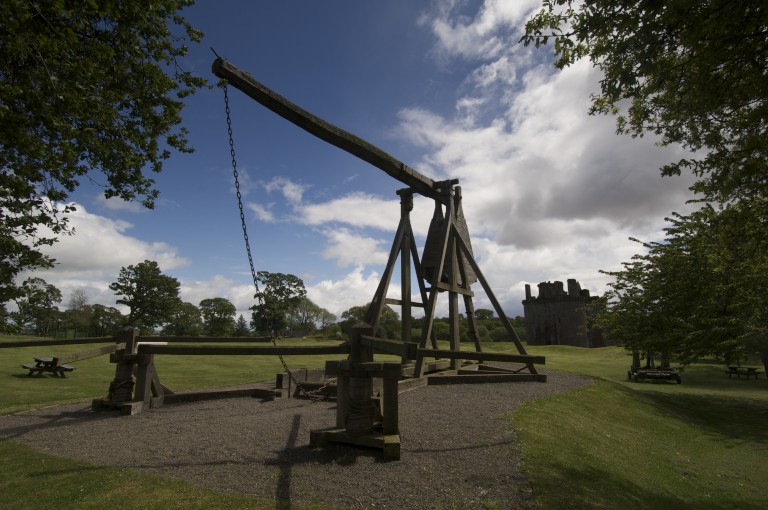
A trebuchet
Powder weapons – artillery – were another major innovation of the period, appearing in Scotland in the later 1300s.
Early versions:
- were slow to load
- had a lower rate of fire than a traditional trebuchet
- were difficult to move (it would have taken over a week for Mons Meg to make the journey from Edinburgh to Dumbarton)
- were notorious for exploding when fired. James II was a notable victim of an exploding canon, killed at the siege of Roxburgh in 1460.
Having said that, when they worked they were highly effective at breaking down the curtain walls of castles.
Castle architecture had to change as a direct result. In the 1400s, fortifications were developed specifically to resist powder weapons.

At Threave Castle, fortifications were developed to resist powder weapons
4. Committed Covenanters
By the time of the Covenanters, gunpowder technology had advanced enough to make handguns a standard weapon. They required less skill to use than a longbow, but also allowed the user to fire from a distance, giving a distinct advantage in battle.
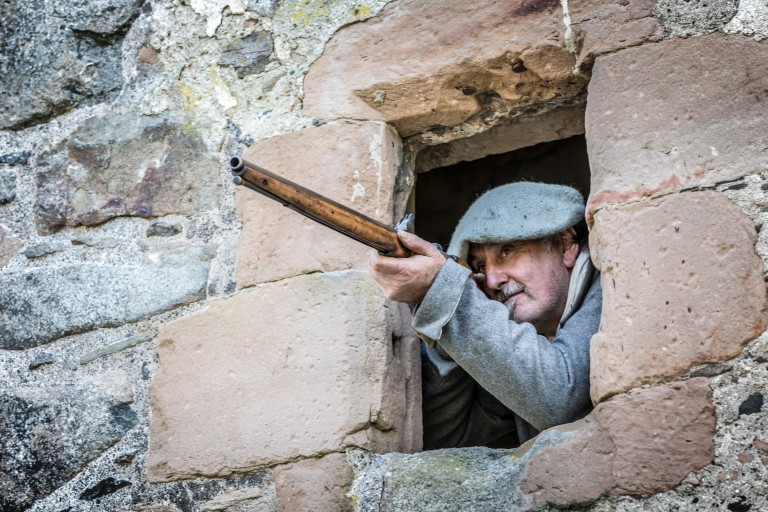
But after a few shots, smoke quickly obscured the vision, making accuracy difficult. And rain could soak your powder, leaving your weapon inoperable. Something of an issue in the Scottish climate!
The development of bullets, each containing its own propellant charge, eliminated the problem of damp powder. Later came rifling, a spiral groove inside the barrel. This improved accuracy.
5. Twentieth Century Tactics
Accuracy was less of an issue with the development of automatic weapons. Hundreds of rounds could be fired at the touch of a trigger.

Although in development before the turn of the century, machine guns similar to those used today didn’t come into regular use until the First World War. German troops used these weapons to deadly effect at the Battle of the Somme, devastating British and French troops in one of the First World War’s bloodiest battles.
We hope you’ve found our introduction to military history helpful. Leave us a comment if there’s anything else you’d like to know about in our month focussing on War and Conflict.

